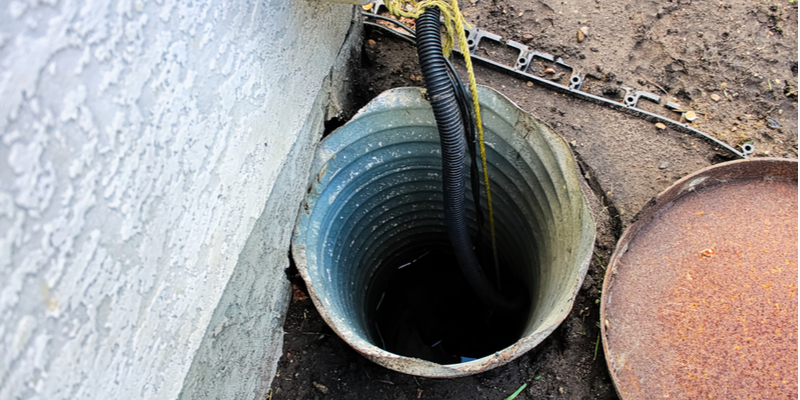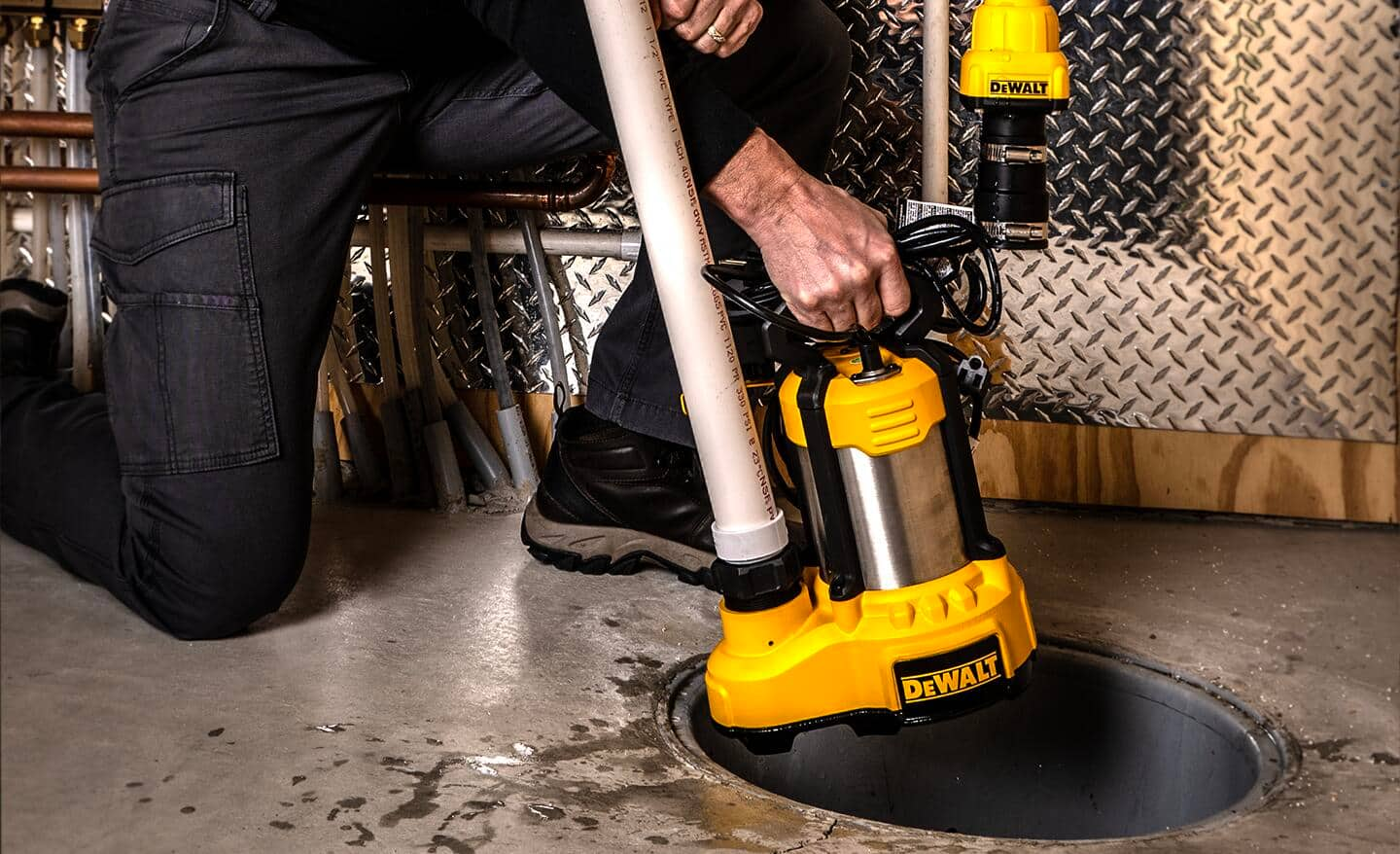Your Comprehensive Guide to Caring for a Sump Pump
Your Comprehensive Guide to Caring for a Sump Pump
Blog Article
Do you find yourself interested in critical information on Keep Your Sump Pump Clean, It'll Keep You Dry?

Sump pumps are important parts in numerous homes, specifically in areas susceptible to flooding or too much wetness. They assist avoid water damages by successfully getting rid of excess water from basements or crawl spaces. However, like any other device, sump pumps call for normal maintenance to guarantee they work successfully when required the most. Cleansing your sump pump is an essential part of its maintenance, and understanding how to do it appropriately can conserve you from pricey fixings and possible disasters.
Introduction
Preserving a clean sump pump is vital for its appropriate performance and long life. Neglecting this vital job can bring about obstructions, malfunctions, and inevitably, water damage to your residential property. For that reason, discovering exactly how to clean up a sump pump is essential for home owners who depend on these tools to maintain their cellars dry and protected.
Signs of a Dirty Sump Pump
Recognizing when your sump pump needs cleaning is vital for avoiding potential breakdowns. Some usual indications that show an unclean sump pump consist of unusual noises throughout procedure, reduced water flow, and noticeable particles in the pit. If you discover any of these signs, it's vital to cleanse your sump pump without delay to stay clear of any type of additional concerns.
Planning for Cleansing
Prior to you begin cleaning your sump pump, it's essential to take some safety precautions. Begin by shutting off the power to the pump to avoid any type of electric accidents. In addition, wear proper safety equipment, such as handwear covers and safety glasses, to protect yourself from dirt, debris, and possible virus.
Understanding the Sump Pump
Before diving into the cleaning process, it's important to have a basic understanding of just how a sump pump works. Normally installed in a pit or basin below the cellar flooring, a sump pump includes several key elements, consisting of a pump, a float button, and a discharge pipeline. When water collects in the pit, the float button triggers the pump, which then pumps the water out via the discharge pipeline, far from the structure's foundation.
Detailed Guide to Cleansing a Sump Pump
Turning off the Power
Begin by detaching the power supply to the sump pump to stop any crashes while cleansing.
Checking for Appropriate Performance
Prior to re-installing the pump, carry out a quick examination to ensure that the float switch turns on the pump appropriately. Pour some water into the sump pit and observe the pump's operation. If every little thing is operating correctly, you can reconstruct the pump and reconnect the power supply.
Eliminating Debris and Dust
Utilize a container or an inside story to eliminate any noticeable particles, dirt, or sediment from the sump pit. Dispose of the debris correctly to prevent it from obstructing the pump or the discharge pipeline.
Cleaning the Pump and Float Switch
As soon as the pit is clear of debris, carefully eliminate the pump from the pit. Evaluate the pump and the float switch for any indications of damage or wear. Utilize a soft brush or towel to clean the surface areas and remove any collected gunk.
Purging the System
After cleaning the pump and float switch, flush the sump pit with clean water to remove any kind of remaining dirt or sediment. This will help guarantee that the pump runs smoothly and effectively.
Upkeep Tips to Keep Your Sump Pump Clean
Along with regular cleansing, there are a number of upkeep tips you can comply with to maintain your sump pump in ideal condition:
Final thought
Cleaning your sump pump is an important aspect of its upkeep and makes certain that it runs effectively when you require it the most. By adhering to the steps outlined in this guide and including routine upkeep into your routine, you can expand the life expectancy of your sump pump and protect your home from water damage.
6 STEPS ON HOW TO CLEAN A SUMP PUMP PROPERLY
UNDERSTANDING SUMP PUMPS
Your sump pump plays a crucial role in protecting your home by managing and removing excess water. It primarily functions as a “shield”, guarding your basement against the damaging effects of water accumulation. The pump is housed in a sump pit in the lowest part of your basement, and its job is to pump out any water that collects there.
During heavy rainfalls or when snow melts rapidly, water can infiltrate your basement, posing potential risks like flooding, structural damage, and harmful mold growth. Here, the sump pump springs into action, pumping out the intruding water and directing it away from your home.
SAFETY FIRST
Before cleaning, remember to prioritize safety. Disconnect the sump pump from the power source to prevent any accidental electric shocks. Also, wear sturdy gloves to protect your hands from any sharp or dirty components within the pump.
REMOVE THE SUMP PUMP
After ensuring your safety, the next step is to remove the sump pump from its pit. Doing this might require careful maneuvering as you don’t want to damage any pump components. Once removed, clean the sump pit to remove any accumulated debris or sludge.
INSPECT THE PUMP
Inspect the pump for any visible signs of wear or damage. Check the power cord, float switch, and impeller housing. If any components look worn out or damaged, consider replacing them to ensure optimal performance.
CLEAN THE PUMP
Thoroughly clean the pump with warm, soapy water. Make sure to rid it of any dirt, gravel, or other debris that might impede its performance. You can use a toothbrush to clean the small, hard-to-reach parts of the pump.
REINSTALL THE SUMP PUMP
Reinstall the pump into the sump pit Make sure it’s positioned correctly to remove the water effectively Once it’s back in place, reconnect it to the power source TEST THE PUMP
Finally, pour some water into the pit to ensure the pump works correctly. It should start automatically and begin pumping out the water; if it doesn’t, check the power source and the positioning of the pump.
Remember, while cleaning your sump pump is an essential part of home maintenance, hiring a professional plumber for a thorough inspection and cleaning at least once a year is also important. This will ensure that your pump is in optimal condition, ready to protect your home from potential water damage.
BEST PRACTICES FOR CLEANING SUMP PUMP DISCHARGE PIPES
Regular Inspection: Regularly inspect your discharge pipes, especially during heavy rainfall or snowmelt periods. Look for any signs of blockage or damage. Early detection of problems can prevent serious issues down the line. Periodic Cleaning: Over time, sediment and debris can accumulate in the discharge pipes, impeding the flow of water. Regular cleaning helps keep the pipes clear and functioning efficiently. You can use a high-pressure water jet to effectively clean the pipes. Insulation During Winter: In colder climates, discharge pipes can freeze, blocking the outflow of water. Protect your discharge pipes from freezing temperatures by insulating them with foam pipe insulation. This will ensure the sump pump can continue to discharge water even in freezing conditions. Proper Positioning: The discharge pipe should be positioned to direct water away from your home’s foundation. Improper positioning can lead to water seeping back into the basement. Ensure the pipe is long enough and angled correctly. Installation of a Check Valve: A check valve prevents water from flowing back into your sump pit after the pump has pushed it out. Installing a check valve helps maintain the efficiency of your sump pump and reduces the risk of flooding. Minimize Pipe Turns: Every curve or turn in the discharge pipe can decrease the efficiency of water flow. By minimizing turns and bends in your discharge pipe, you can increase the efficiency of your sump pump. https://www.fullspeedplumbing.com/how-to-clean-a-sump-pump-properly9999/

As a keen person who reads about Steps to Cleaning Your Sump Pump Properly, I figured sharing that excerpt was smart. Enjoyed reading our review? Please quickly share it. Let someone else check it out. Many thanks for going through it.
Get Estimate Report this page